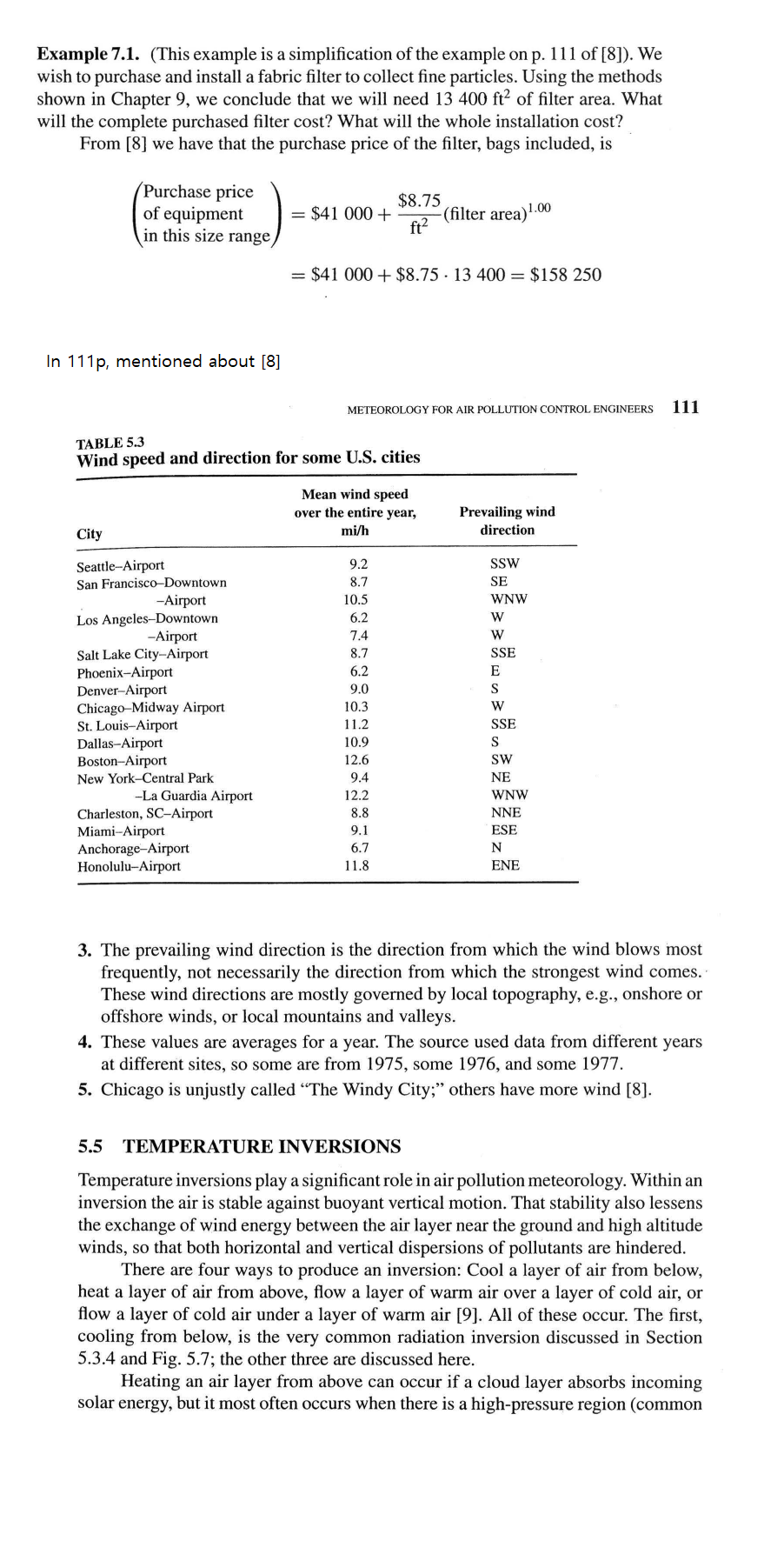Answered step by step
Verified Expert Solution
Question
1 Approved Answer
Question from Noel de, Nevers Air Pollution Control Engineering, Problens 7.9 In Example 7.1, what are the values of a, b, and c in Eq.
Question from Noel de, Nevers Air Pollution Control Engineering, Problens 7.9
In Example 7.1, what are the values of a, b, and c in Eq. (7.1)? If we wish to rewrite that equation in terms of the volumetric flow rate instead of the filter area, and if the flow velocity through the filter is 2ft/min, what would the values of a, b, and c be?
[Eq. (7.1)

[Example 7.1]

Step by Step Solution
There are 3 Steps involved in it
Step: 1

Get Instant Access to Expert-Tailored Solutions
See step-by-step solutions with expert insights and AI powered tools for academic success
Step: 2

Step: 3

Ace Your Homework with AI
Get the answers you need in no time with our AI-driven, step-by-step assistance
Get Started


